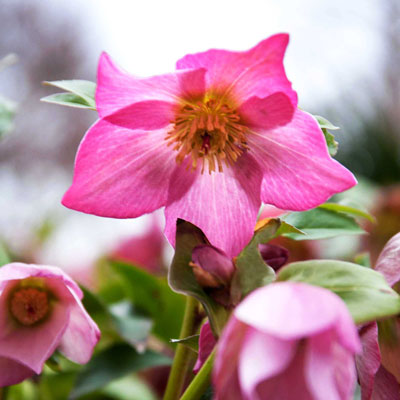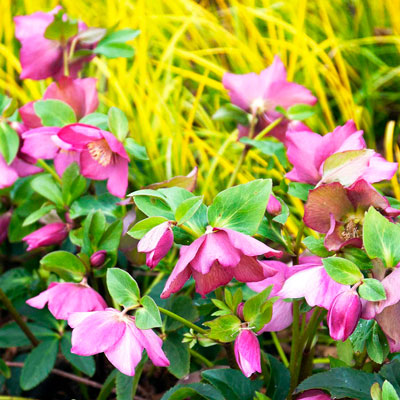Hellebores Riding a Wave
I’ve been in this business for many years. I’ve seen many of the plants that we now commonly use in our landscapes come into the marketplace. I’ve also seen many come and go in just a few years.

Hellebores are destined to be long-termers. They grow in the shade. They bloom in the shade. They rarely have any problems with insects or diseases. And, best of all, they’re pretty. What’s not to like!
Jimmy Turner talked about Hellebores being in his gardens at the Dallas Arboretum. That was before he left for Australia for the first time. (We all miss Jimmy and wish he’d come back to Texas! What a great source of plant information and enthusiasm!)
Next thing I knew, these Lenten roses were showing up in Texas nurseries. And they were selling out as fast as they arrived.
More recently, they’ve become much more mainstream and Texas gardeners are finding how much fun they are to use in little shadowy corners of the perennial garden. After all, it’s hard to find flowering perennials that do well in shade.
Nurseries offer them growing in pots in bud and bloom, but they will sell very quickly. Ask ahead of time when they might be arriving and be there to “meet the truck.” They are also available from the better national online sources. Hellebores are expensive, however, so buy selectively and plant and care for your plantings properly.

Their needs in a nutshell…
Here’s what you need to know to succeed.
• Shade from the hot afternoon sun in the summer.
• Raised beds that drain well.
• Highly organic planting soil (several to many inches of peat, compost, rotted manure, finely ground bark mulch, humus, etc.).
• Their flowers (many varieties) hang downward, so they are best viewed if planted where they can be viewed at waist level or higher. Otherwise, look for types that display their blooms upward.
• Go well alongside ajuga, oxalis, ferns, hostas, Texas Gold columbines, decorative sedges and other shade-loving plants.
• Light application of high-nitrogen fertilizer as new growth begins in late winter.
• Keep soil moist at all times.
• Keep plants tidy by removing dead foliage over the course of the season.
• Plant them where they can remain undisturbed for years. They will be happy to serve you for a long time.
Note: Plant Delights Nursery in North Carolina is one of America’s finest sources of unusual perennials. Here you can see owner Tony Avent explain how they produce their Hellbores from seedlings. While you’re on their website look around at the beautiful types that they offer.
